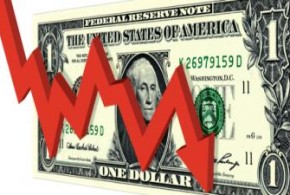Is the slowdown temporary or is the economy headed for trouble?
Read More »GDP Growth Substantially Improves in ‘Advance’ Q2 Estimate
The nation's real gross domestic product (GDP) bounced back from a dismal first quarter with an annual growth rate of 2.3 percent in the "advance" estimate for Q2 released Thursday by the Bureau of Economic Analysis (BEA).
Read More »Outlook for Housing and Economy Remain Positive Despite Q1 GDP Contraction
Despite economic growth taking a step backward, the forecast for housing for the rest of the year remains positive, according to Fannie Mae SVP and chief economist Doug Duncan. New home sales increased by 6.8 percent in April up to 517,000 annualized units; the National Association of Realtors' Pending Home Sales Index has risen by 14 percent in the last 12 months; existing home sales are at a nine-year high; and purchase applications recovered at the end of May from a slow first half of the month up near a two-year high.
Read More »Temporary Factors Slowed Economic Growth in Q1, Analyst Says
In his commentary, Kan mentions that refinances are expected to be $551 billion in 2015, compared to a previously estimated $510 billion. MBA now estimates a total of $1.28 trillion in mortgage originations for 2015, compared to $1.12 trillion in 2014.
Read More »Economists Retain Positive Outlook Despite ‘Paltry’ GDP Growth in First Q1 Estimate
In spite of the recent reports of slow economic growth in Q1, Fannie Mae has maintained its forecast for GDP growth of 2.8 percent this year and its position that the economy will "drag housing upward." Fannie Mae chief economist and SVP Doug Duncan pointed out that the actuals as far as housing – existing home sales, new home sales, and prices – were either at or very close to their predicted levels during Q1, and mortgage purchase applications have been way up for the last couple of months.
Read More »Economic Growth Slows as GDP Expansion for Q4 Falls Short of Economists’ Predictions
According to BEA, the slowdown mostly came from a rise in imports coupled with a decline in exports, a downturn in government spending, and decelerations in nonresidential fixed investment. Those weaknesses were offset by an upturn in private inventory investment and a pickup in consumer spending as falling gas prices left Americans with more discretionary income.
Read More »Q3 GDP Revision Pushes Economy to Fastest Growth in a Decade
According to BEA, the latest quarterly estimate includes improved contributions from consumer spending, which is now estimated to have increased 3.2 percent compared to Q2's 2.5 percent gain. Also improved in the third report was the contribution from nonresidential fixed investment, which increased 8.9 percent. Residential fixed investment—a measure of the housing market's direct contribution to economic activity—increased just 3.2 percent.
Read More »Consumer, Government Spending Boost Revised Q3 GDP Rate Up to 3.9 Percent
The U.S. economy continued to outperform in the third quarter as consumer and government spending provided a boost to gross domestic product (GDP). According to a second estimate from the Commerce Department, GDP grew at an annualized rate of 3.9 ...
Read More »GDP Growth Slows Down But Still Beats Predictions for Q3
The nation's economy continued to grow at a brisk clip in the third quarter, slowing down from the prior period but still beating forecasts.
Read More »GDP Inches Upward In BEA’s Third Estimate
According to BEA, the turnaround in the second quarter largely reflected positive contributions from consumer spending, exports, private inventory investment, state and local government spending, and both residential and non-residential fixed investment.
Read More »
 DSNews The homepage of the servicing industry
DSNews The homepage of the servicing industry





